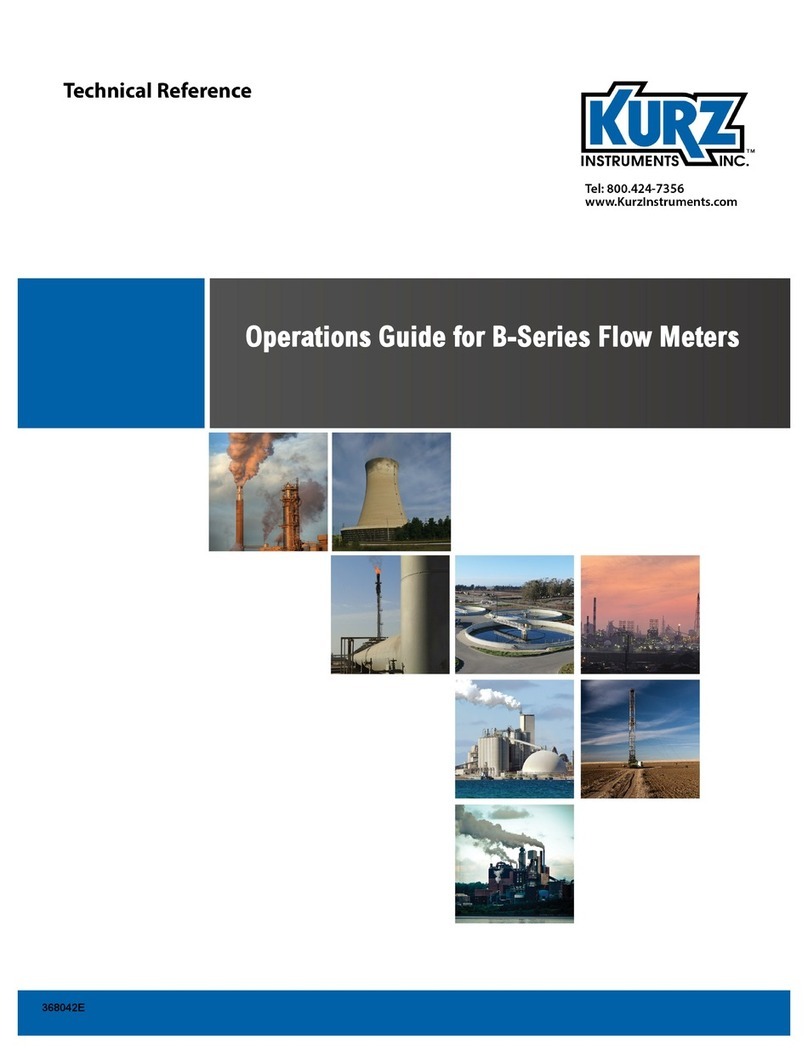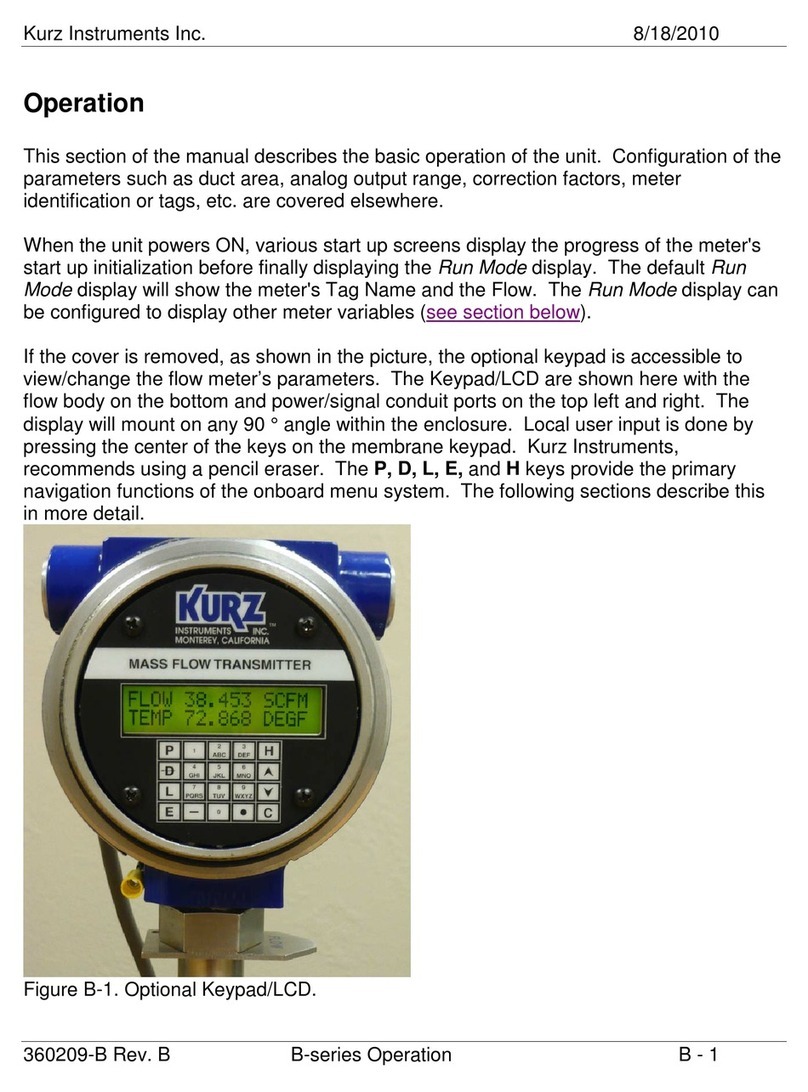Kurz Instruments, Inc. 831-646-5911
2411 Garden Road www.kurzinstruments.com
Monterey, CA 93940
Insertion Meter Installation Guidelines
1. Mount Probe so its velocity sensing element is centered in the duct/pipe. This location has the most stable flow reading. Note the flow arrow direction
points in the direction of the flow.
2. The upstream and downstream distance to flow profile disruptions from that of a straight pipe are “X” diameters upstream and 5 downstream. We have
chosen 2% maximum error from the baseline straight pipe calibration for the distance criteria. Longer straight runs will reduce this error level. Here are
four example cases in order of their disruption to the flow:
a. Valves change the flow profile as they open and close so the sensor should not be located too close. The gate valve is the worst and the metering
valves are the best at reducing their flow profile changes between open and closed.
b. Branching joints also change the profile as the percentage of flow changes between the branches.
c. Elbows or direction changes will disrupt the long-run pipe profile. As this disruption settles down, the profile can wobble or move depending on
the flow rate. Several elbows in different planes will impart a swirl that also imparts an error in the readings (flow is not straight on to the sensor)
and the upstream distance should be increased. The distance from elbows may be reduced if field calibrations are used. Double elbows in different
planes introduce swirl and need 50% more distance than a single elbow does.
d. A line size change will also disrupt the profile and can introduce instability so this should be avoided unless you have more experience on how to
use this to your advantage. The distance from a line size change may be reduced if field calibrations are used.
3. The duct area or pipe inside dimensions are used to program the area of the flow meter. You enter the data in ft2or m2in the Program Mode of the meter.
4. The probe will block off some of the flow area and accelerates the velocity proportional to its area projected on to the duct/pipe cross section. This is known
as the Sensor Blockage Correction Factor (SBCF) and is simply defined by entering the insertion depth (L) from the end of the window to the duct inside
wall and specifying the diameter (d) of the probe in the Program Mode of the meter.
5. Field Calibration Data is the key to achieving accuracy for the insertion probe. Without this step you can have good repeatability but the absolute flow
number requires a reference flow measurement be taken at the same time you record the indicated display of the insertion meter. The correction factor
which is velocity dependent, CF(v), is defined as the ratio of True reading to Indicated reading. The basic calibration of the unit is a point velocity sensor.
To convert this to volumetric flow rate or mass flow rate requires the proper area and the average velocity, this is where the field calibration fits in. As the
field calibration method is quite long and technical, you are encouraged to do one of two things to achieve this:
a. Contract the field calibration with Kurz Instruments, Inc. or another reputable field calibration company.
b. Do it yourself if you have the experience or a test team at your disposal.
Common methods of doing reference method calibrations entail: duct traverses, tracer gas dilution method or the process Stoichiometry which requires support
from your process engineering group. Sometimes the correction factors can be entered based on an ideal duct profile model or a finite element analysis (FEA) or
computation fluid dynamics (CFD) program.
For more information on all the above, please refer to the full product manual provided on CD or at our website www.kurz-instruments.com. Also see “Flow
Measurements 2nd ed.” Edited by D. W. Spitzer, ISA Press 2001. Chapter on Insertion Flow Measurements.
360208-D Models 155, 454FTB, 504FTB, 534FTB 4

































